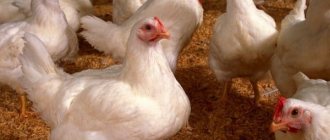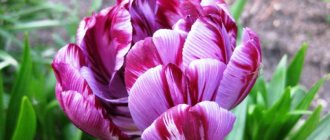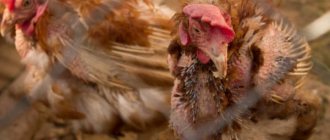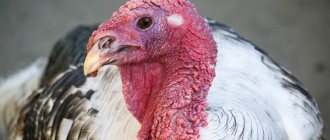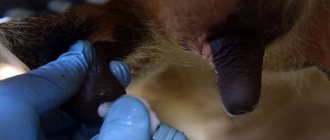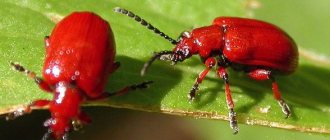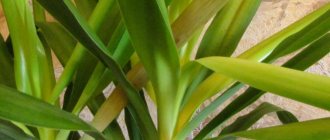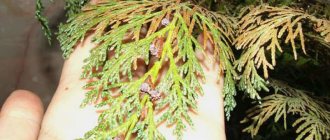Lighting and location
Due to its origin, the yucca flower is a light-loving plant species. Therefore, at home, this “palm tree” feels great not only on the western or eastern side of the room, but also in its southern part.
If it is exposed to a small amount of sunlight, it will not cause any harm to it. But on particularly hot days you still need to provide shade to the plant .
The northern direction is absolutely not suitable for yucca, since with a lack of light it will become depleted, stretched out and lose its inherent decorativeness. As a last resort, if this is the only place where it can be placed, then it is necessary to provide it with additional lighting, in which its daylight hours would be at least sixteen hours.
With the onset of summer, it is advisable to place indoor yucca in the fresh air; if this is not possible, then you can continue caring for it at home, but you need to ventilate the room every day without creating drafts.
Diseases and pests of yucca - photos, signs, treatment methods
Evergreen exotic plants can add elegance and harmony to the interior of an apartment. Such flowers with large or long leaves are placed in large halls, living rooms or even in the bedroom. Caring for them is not difficult, but they must be carefully protected from diseases and harmful insects. Today we will talk about yucca.
In this article we will look at the most common diseases of yucca, which can not only spoil the appearance of the plant, but in some cases even destroy it. I will also tell you which insects pose a danger to exotic plants, list methods to combat them and important basics of prevention.
Air temperature and humidity
In spring and summer, the optimal air temperature for yucca will be from twenty to twenty-five degrees. With the arrival of the autumn period it is lowered to twelve degrees.
If in autumn and winter the air temperature in the room where the plant is located is higher, its foliage begins to thin, sag and lose its original bright color.
When caring for indoor yucca, you must remember that it loves a high level of humidity. Therefore, it is necessary to carry out daily spraying with warm water , and pour pebbles or coarse gravel into the pan, which should be constantly wet.
You also need to give the yucca a shower once a month using warm water, this will help remove accumulations of dust and other contaminants from the foliage.
Yucca ivory and Yucca aloelia are less sensitive to high dry air species, so when caring for them you can do without spraying.
Proper care is the basis for strong yucca immunity
In nature, yucca grows on continents with hot and dry climates. This plant is accustomed to the scorching sun, so in order for it to feel harmoniously at home, it needs to create approximately the same conditions.
The main point in caring for yucca is the period of “rest”, into which the plant falls with the onset of late autumn. The health and beauty of an exotic flower depends on how the rest period is organized.
- Around the end of October, the yucca falls into “deep sleep.” This period lasts until mid-February. At this moment, the plant stops growing, it no longer requires a complete nutritional complex of minerals, and it does not need abundant watering.
- The optimal temperature in the room where yucca grows should be up to +12 degrees. It is important that the plant is not exposed to catastrophically low temperatures (+8 degrees and below).
- The plant does not need edges until the beginning of the growing season.
- Watering needs to be reduced to 1-2 times a month.
At the time of vegetative development, an exotic flower needs the following conditions:
- plenty of sunlight;
- the temperature in the room is not higher than 30 degrees;
- regular spraying of foliage;
- application of mineral fertilizers (once every 2 weeks);
- protection from drafts and sudden temperature changes.
How to water and feed yucca
In spring and summer, watering the yucca should be plentiful, but you need to take into account its size, the volume of the pot in which it is located, the temperature and humidity level in the room.
Therefore, when considering the question of how often to water yucca, you need to focus on the fact that between waterings the soil should dry out five centimeters deep.
At the end of autumn, watering is reduced, and the plant is watered only after the soil has completely dried, in order to maintain the vital activity of the roots. Excessive watering of yucca in winter is especially destructive, since it is kept at low air temperatures, and excess moisture can cause it to rot.
Water for irrigation should be warm and filtered or settled . The required amount of liquid can be selected at the rate of one liter of water per five liters of soil.
With the beginning of spring, you should start feeding yucca regularly twice a month. To do this, use complex mineral fertilizers. At the same time, they need not only to be added to the soil, but also to be sprayed on the lower surface of the foliage. You can also infuse humus, mullein or horse manure, which give a good increase in green mass.
You should not start feeding the transplanted plant until it has completely taken root. It is also not recommended to do this during the period of yucca illness, until it has completely recovered.
How to deal with yucca pests?
Yucca fungus and bacterial diseases are not the worst things you can encounter when growing this plant. Often it is also affected by various pests, which can not only spoil the decorative appearance of the yucca, but also lead to its death.
Whitefly
We are talking about an insect that feeds on succulent yucca leaves, or rather, only on their juice, which leads to the appearance of dead areas on the plant. If you look closely at such a plant, you can see very small white flies; these are whiteflies.
There are many methods to combat this insect:
- Hang yellow Velcro strips designed to catch common flies in close proximity to the plant.
- Use an insecticide to spray the plant, for which Aktara is ideal. To obtain a solution, dilute 4 g of the substance in 5 liters of water.
- Treat the affected plant with Akarin, Iskra-Bio, Inta-Vir, Fitoverm. To completely eliminate the pest, a minimum of 4 treatments will be required, the interval between which should not exceed 10 days.
False shield
The false scale insect also feeds on the cell sap of the yucca, so with intensive reproduction, this parasite can completely destroy the plant. You can make sure that the yucca is really affected by the pseudoscale insect by looking at the tubercles and waxy droplets on the plant, as well as by the discoloration of the affected areas.
It is quite difficult to combat false scale insects, since waxy scutes are present on the surface of the pest’s body, due to which they are resistant to treatment with insecticides. Therefore, in the fight against this yucca pest, it is recommended to use:
- regular alcohol;
- water-oil emulsions;
- replacing the top layer of soil in a yucca pot.
How to make yucca more fluffy
Typically, yucca has one trunk and a tuft of leaves. In order for the plant to form several new shoots, you can prune it. You need to prune yucca at home in early spring before active growth of the plant begins.
Pruning is carried out only with well-developed specimens that have reached at least thirty centimeters in height, and their trunk must be at least five centimeters in diameter.
After pruning, the trunk will stop growing, so pruning should be done when the yucca is the size planned in the final version.
The most correct way to trim the yucca is as follows: the top is cut off with a strong, sharp knife or pruning shears treated with alcohol. The cut areas should be sprinkled with crushed charcoal or activated carbon to disinfect and prevent putrefactive processes caused by fungal diseases. You can also use ground cinnamon for this purpose.
Next, the yucca is placed in a bright and warm place and cared for as usual. After a few weeks, the dormant buds of the plant will awaken, which will eventually develop into separate full-fledged trunks with bunches of leaves.
Yucca pests
A palm tree with a strong immune system is rarely attacked by harmful insects. But if the flower is weakened (due to improper care or due to the development of diseases), then a wide variety of pests prefer to immediately settle on it.
Shchitovka
If small convex and hard growths are found on the surface of the leaves, then the flower is affected by scale insects. The insect feeds on the sap of leaves, causing significant harm to them. A sticky substance (a waste product of the pest) left on the leaves disrupts the process of photosynthesis and is a favorable environment for the development of fungal infections.
- free the leaves from scale insects - manually remove the pest; you can first treat the leaf with vodka or soap solution;
- treat the soil with an insecticidal agent (Fitoverm, Aktara), repeat the treatment at least 3 times (interval - 10 days).
Spider mite
Small threads appear on the surface of the affected palm tree - this is a consequence of the activity of spider mites. The leaves of the flower become lighter and become covered with a whitish coating.
It is impossible to detect the pest visually - its size is negligible.
The pest feeds on plant sap. Severe infestation by spider mites will lead to the death of the palm tree.
- treatment of yucca with insecticide - Fitoverm, Aktara, Vermitek, Iskra-Bio;
- spraying the flower with a soap solution, a decoction of garlic.
How to properly care for yucca in winter
In autumn and winter, the air temperature in the place where the yucca is located should not be higher than twelve degrees. If in winter the plant does not have enough light, and the temperature and dryness of the air are too high, then the yucca dries out, i.e. its shoots stretch out, the leaves become thinner, droop and dry out.
You need to water the yucca very rarely in winter ; twice a month will be enough for the roots to retain their functions. At this time, overflows in combination with low temperatures can provoke rotting of the root system. Feeding in winter stops completely.
What to do if yucca does not bloom
Yucca blooms with a variety of beautiful flowers, painted in different shades. Moreover, buds should appear every summer if you follow all the rules of care, creating conditions close to natural. However, unfortunately, not everyone, even experienced gardeners, manages to achieve this. A prerequisite for cultivating yucca is the presence of long daylight hours, since it loves light very much, as well as the correct temperature. When growing in indoor pots, you will have to be content with only its gorgeous leaves.
Often the owners of such a specimen do not understand why the young plant does not bloom. For the first buds to appear, proper care is required for four to five years.
Common yucca diseases and their treatment
Due to violation of the rules of care, yucca can be affected by aphids, spider mites, scale insects, whiteflies and mealybugs. The appearance of these pests causes great harm to its general condition, while they quickly multiply and populate not only this plant, but also move to neighboring ones. Therefore, it is necessary to conduct weekly preventive examinations to prevent infection or detect it at an early stage.
It is also necessary to follow all the rules for caring for yucca. If pests do appear, you must first wash the plant with a soapy solution, and then treat it with insecticides or carry out treatment with traditional methods.
The most dangerous diseases for plants . They appear and develop quickly with high air humidity, waterlogging of the soil, excessive spraying, low air temperature, as well as sudden changes in air temperature, lack of ventilation and the use of already contaminated soil. A large amount of nitrogen in the soil, as well as a lack of phosphorus and potassium, also contributes to the appearance of these diseases.
How to properly care for gardenia can be found in the article at this address: https://cvetolubam.ru/gardenia/
What to do if the leaves of gardenia jasminoides turn black and fall off is written here.
A detailed guide on how to replant gardenias at home.
The most common diseases of yucca include:
- Gray rot, which causes rotting of foliage and stems. Over time, they completely soften and the yucca disappears;
- Leaf spotting manifests itself in the fact that the yucca foliage becomes covered with brown spots with a gray coating, and then dries out and falls off;
- When cercospora blight develops, yucca leaves become covered with oval or long shapeless brownish spots. If left untreated, they grow rapidly, their center becomes lighter and the edges darken. Over time, they completely die off and the plant dies;
- With marginal leaf necrosis, the edges of the leaf blade become yellowish-brown or brownish-bronze in color. Then the entire surface of the leaves changes color and areas of dead tissue appear on it. The disease is quite complex and often the plant cannot be saved.
Since most diseases caused by various fungi and bacteria are very difficult to treat, and often simply cannot be completely eliminated, regular examinations should become a must when caring for yucca.
If the conditions for keeping the plant have been violated, and the plant has already suffered from some disease, it is necessary, firstly, to eliminate all the affected leaves and parts of the stems. Then the yucca needs to be treated with a fungicide solution.
What problems can you encounter when growing a flower?
The basic rule when caring for yucca is to avoid waterlogging the soil. If you water too often or too much, root rot or other diseases will begin. It is better to underwater a flower than to overwater it, since it tolerates drought better than a large amount of moisture.
Many people don’t know what to do when the yucca drops its leaves. But it is precisely this fact that most often indicates waterlogging.
The most common problems encountered when growing this plant:
- lack of flowering;
- bacterial burn;
- the formation of brown spots on the leaves;
- the leaves on the yucca turn yellow;
- the edges and tips of the leaves become brown;
- the appearance of gray spots on the leaves;
- the presence of rot on the trunk and root system.
In addition to diseases, yucca can also be affected by a variety of pests. Most often these are whiteflies, false scale insects, slugs, spider mites and mealybugs. How to deal with the above problems, we will consider in this article.
The most common problems gardeners have when growing yucca
As with many plants, the condition of the yucca leaf blades primarily indicates improper care and inappropriate conditions. They begin to lose their natural original color, become deformed, and in especially severe cases die.
Therefore, it will be useful for those who decide to have this elegant false palm tree at home to learn about possible problems when growing it and how to eliminate them.
Yucca leaves often turn yellow and dry out ; this can happen if it is kept at a temperature higher than recommended during the dormant period. At the same time, it can even shed its leaves. You need to move the plant to a cooler room.
The leaves also turn yellow due to poor lighting, it is necessary to place the yucca in a brighter place or provide additional lighting. Yucca turns yellow due to its age, but this is a natural process that cannot be influenced.
If the yucca dries out and sheds its leaves after purchase, then apparently it has fallen into a stressful state after moving to a new place. It needs to be placed in a slightly shaded room, separate from other plants, provided with regular watering, but it is better to refuse feeding until it recovers.
This process lasts several weeks, during which time the yucca should also be inspected for pests and signs of diseases to which it may be susceptible. After the plant acquires its healthy original appearance, it needs to be replanted and moved to a permanent place of growth that meets all the requirements for the normal development of yucca.
If the lower leaves turn yellow and dry, then do not worry, this is due to the specifics of the plant, as in the wild, it sheds its leaves in the lower part, which makes it look like a palm tree. The lifespan of each sheet is no more than two years .
If the tips of young leaves dry out and a brown stripe forms along the edge, then the air in the room is too dry. This can also occur from insufficient watering or drafts. It is necessary to carefully monitor the maintenance of the plant.
When the air temperature is lower than that required for the normal development of yucca, its leaves curl. If at the same time their edges acquire a brown tint, this indicates excessive watering.
Often the foliage of the plant becomes covered with dry brown spots, which indicate that the yucca has not been watered for a long time and the earthen ball has dried out completely. And dry light spots appear on leaf blades during prolonged exposure to bright sun.
All these problems can be easily eliminated by studying the rules of care and conditions for keeping yucca and strictly following them.
How to save yucca if the roots rot
Sometimes, if the soil is selected incorrectly, there is no drainage layer, or the soil is very waterlogged and water stagnates in it, the root system rots.
As a result, the trunk becomes covered with dark spots, which soon soften and acquire a watery structure. The same thing happens with foliage. Many gardeners often hastily decide to destroy the plant, although in some cases, if the yucca is large enough, it can be saved.
To do this, you need to inspect it, and
Yucca diseases: prevention and treatment
The yucca plant is not at all demanding in terms of soil nutrition and regularity of watering, since it is an excess of moisture that often leads to the appearance of diseases in the plant. Let's take a look at the measures to combat the most common of them.
Yucca doesn't bloom
In nature, the tree-like plant yucca blooms every summer with panicles of inflorescences of different colors. However, not all professional flower growers succeed in achieving yucca flowering , and even in greenhouses they rarely bloom, since for this plant it is important to create conditions as close to natural as possible. But since we cannot provide long daylight hours and optimal temperature in the apartment, we only have to admire the luxurious crowns of this plant.
Bacterial burn
Bacterial burn of yucca leaves is rare, but it can affect the entire plant. With this disease, small spots appear on the yucca, which are initially yellowish in color, but become black over time.
The spread of the causative agent of this disease occurs at humidity above 70% and temperature above 18°C.
However, yucca's resistance to fire blight is maintained when clean, treated soil and pots are used for planting it, and contact with other plants is minimized. It is worth understanding that the source of the burn can be insects, and yucca can become infected through damaged leaves and roots.
It is almost impossible to cope with a bacterial burn, so if yellow-brown spots spread strongly to the leaves of the yucca, it should be thrown away. If spots appear on several leaves, they are removed, and the entire plant is sprayed with Bordeaux mixture or antibiotics for prevention, among which you can choose streptomycin.
Brown spots on leaves
If the leaves on the plant begin not only to turn yellow and fall off, but yellowness appears on them in the form of spots and rapidly conquers more and more new areas - most likely this is brown spotting on the yucca. If you do not resort to treatment in time, the leaves will begin to turn black and crumble. The reason for the development of such a disease on the yucca plant is an insufficient amount of watering. The plant does not like waterlogging, but if the earthen ball in the pot is too dry, the yucca will begin to dry out.
To prevent brown spots on yucca leaves, it is important to regularly ventilate the room in which the plant is located and avoid increasing humidity; however, watering should be very abundant, although not frequent. Make sure that the room temperature does not change. If the spots have already appeared, then in addition to changing the growing conditions, the yucca will require special treatment with fungicides, among which the following preparations can be used:
- Oksikhom (10 liters of water will require 20 g);
- Alirin-B (2 tablets of the drug per 1 liter of water);
- Vitaros (2 ml of substance is used per 1 liter of water).
The resulting fungicide solutions are used for surface spraying of the affected yucca. It is recommended to repeat this treatment three times, taking breaks of 10 days. Damaged leaves should be removed from the plant.
Brown edges and tips of leaves
A similar symptom often develops in cases where the air in the premises becomes too dry due to the operation of heating devices. Some types of yucca are able to tolerate this phenomenon quite steadfastly, but most of them begin to dry out. To avoid yellowing of yucca leaves along the edges and tips, try to increase air humidity by regularly spraying the plant. In this case, it is not worth watering more often, since waterlogging can cause rotting of the roots.
Gray leaf spot
The symptoms of this disease are very noticeable, although they develop gradually: either pinpoint necrosis appears on the leaves, or light spots appear on the edges of the yucca leaves. Moreover, all gray spots have characteristic brown edges. Most often, old leaves that are located in the lower part of the plant are affected by gray spotting.
Since the causative agent of gray spot is a fungus, it is almost impossible to cope with it in case of severe damage. Leaves covered with spots are simply removed, and the entire plant is treated with Fundazol. To avoid this, treatment with this fungicide can be carried out regularly, but it is important to avoid spraying the yucca with plain water.
Stem and root rot
Treatment of yucca diseases such as stem and root rot is not possible, since when they occur, the plant is overly affected and will no longer be able to recover. Characteristic signs of stem rot are a significant softening of the woody stem, as well as the appearance of bright red ulcers on it.
With root rot, watery spots appear on the root system of the plant, as a result of which the internal tissues of the roots begin to gradually disintegrate. This disease also appears on the upper part of the plant, on the leaves of which spots covered with dark spores form. Fortunately, this does not happen often, and the plant becomes infected during transportation.
To prevent stem and root rot, it is recommended:
- when planting and replanting yucca, sterilize the soil mixture and pots;
- do not allow the soil to become waterlogged;
- Ensure good drainage at the bottom of the yucca pots.
Why do yucca leaves fall off?
This is a very rare occurrence, because the decorative false palm tree is an evergreen plant and changes in nature do not affect its appearance. If the yucca is happy with its environment, it stays green all year round. If an indoor palm tree sheds its leaves, you need to understand the reason and, if necessary, take action .
The reasons for sudden exposure of the stem are:
- Stress when changing location. A newly purchased yucca simply needs to be given time to adapt to its new environment. In this case, it will not hurt to replant the plant in fresh soil. A pot is chosen that is 2-3 cm larger, drainage made of expanded clay is placed on the bottom, and soil for palm trees or cacti is sprinkled on top.
- Rough transplantation with damage to the root system. Yucca will adapt and throw out young shoots. Any root growth stimulator that is used in accordance with the instructions will help to ease the adjustment period.
- Frequent watering. Rotting of the roots entails wilting of the yucca - death of the stem and shedding of leaves. In this case, you cannot do without a transplant. The rotten parts are removed, the cut of the intact lignified top is treated with crushed coal, placed for rooting in damp sand or vermiculite, and watered with epin according to the instructions.
- High air temperature in winter with insufficient lighting. How to save yucca from baldness in this case? Provide the plant with cool air (+15 ⁰С) and additional lighting.
Reasons why leaves turn yellow
If you find that your yucca leaves have turned yellow, it is most likely due to the uncomfortable growing conditions of the crop. But this concept is too general, so each moment should be considered separately. The palm tree is not the most demanding plant, but if the lighting in the room is insufficient, the temperature is low, and the air humidity is far from normal, the palm tree gets sick and dies.
A miniature palm tree may lose leaves due to improper care or pest damage:
- The leaves of the crop turn yellow and dry out due to excess light, low air humidity or improper watering.
- Due to excessive lighting, dry spots form on the leaf blades, so the plant should be protected from active sun.
- When overwatered, the leaves become covered with brown spots.
- If the edges and tips of the leaves dry out, then the air in the room is not humid enough, there are drafts, or the palm tree does not have enough watering.
- When overcooled, the leaves of the flower begin to curl and their edges darken.
- Lack of lighting leads to yellowing of the leaves, and the shoots of the flower become elongated.
- Formidable enemies of the false palm are scale insects, spider mites, aphids and thrips.
All these parasites settle on the plant and feed on its juices. Therefore, the leaves begin to turn yellow and dry out. If no measures are taken, the flower may die.
Why do the lower leaves of yucca turn yellow?
Yucca is still an indoor flower, although it is usually called a false palm. If the bottom row gradually ages, turns yellow and dries out, this can be interpreted as the plant's natural life cycle. Its woody trunk does not actually branch, the crown consists of pointed leaves - all this makes the yucca exotic and suggests that its leaves should not turn yellow. But uniform yellowing underneath is normal.
To improve the decorative appearance of the false palm, the lower yellowish rows of leaves should be cut off. Leave healthy and vigorous greens untouched.
This is necessary not so much to save the plant (nothing threatens it), but to preserve its attractive appearance.
The tips of the leaves turn yellow
More often, the tips turn yellow and dry out due to lack of light in winter and dry air. From October to the last month of winter is a dangerous time for yucca due to reduced daylight hours. If the weather is cloudy outside, the plant will not like it either. Therefore, in the cold season, the appearance of yucca may deteriorate somewhat.
During this period, not only the lower leaves lose color - the leaves in the most prominent places can stretch out and turn yellow. Drying of the tips is also noted, which may be accompanied by loss of leaf turgor.
Treatment for yellowing involves the use of phytolight (or any other local lighting). If you provide the palm tree with 10–12 hours of diffused light per day, this will stop the yellowing process and improve the health of the plant.
If the problem is dry tips, then it makes sense to check whether the radiators are too hot during the heating season , and whether the yucca is standing too close to them. The emphasis should be on air humidification. There are special devices for this. Even simple vases of water (for flowers) can help in this situation. Today you can find decorative ceramic vases-humidifiers on sale; they are mounted on the wall and water is regularly collected in them. For a small room this is quite a solution.
Why do yucca leaves turn yellow in winter?
Yucca has a characteristic dormant period. So, in winter the palm tree needs rest, because in the spring it will begin to intensively increase its vegetative mass. If you keep the plant in a too warm room, allow temperature fluctuations, drafts and abundant watering, the cause of yellowing of the leaf blades will not be a reason for the puzzle. All of the above negative aspects should be prevented.
During the winter season, caring for yucca at home involves:
- stably humidified air;
- lighting about 10–12 hours;
- cool (about 12–15 degrees) without draft;
- watering no more than once every 2–4 weeks.
Why do yucca leaves turn yellow in summer?
If the leaf plates are covered with yellow spots in the summer season, ultraviolet radiation will have to be blamed. The plant turns yellow and dries out due to sunburn.
The conclusion is that the palm tree should be removed to a place with diffused light or hidden in partial shade.
Why do yucca leaves turn yellow after transplantation?
Changing the yucca pot should be done carefully, trying not to damage either the roots or the above-ground part of the tree. Otherwise, the plant will experience severe stress, which will be demonstrated by yellowing and dropping leaves.
Usually, after some time, the yucca will adapt and throw out new healthy leaves. But to speed up the process, you can feed it with a root growth stimulator. This will provoke their restoration and activation of green mass growth.
Only the tips of the leaves dry out and turn yellow.
Florists have noted that the most common causes of yellowing and drying of leaf tips are:
- lack of lighting in winter;
- dry air.
Reduced daylight hours from October to the end of February, as well as cloudy weather, are factors that adversely affect the appearance of the palm tree. Yucca leaves lose color, stretch out, and turn yellow. Drying of the tips can be observed, sometimes accompanied by loss of leaf turgor. Phytolamps (any other artificial lighting) will help correct the situation.
On a note! Diffused light for up to 10-12 hours a day will stop the yellowing of the tips and return the palm tree to a healthy appearance.
Dry air during the heating season is the second common cause of drying out of the ends of the sheet plate. In winter, yucca should absolutely not be kept near a radiator or other heating devices. It is important to take care of regularly humidifying the air in the room. Periodically wiping the leaves with a wet sponge will also help maintain the health of the palm tree.
Leaves turn yellow at the stem
A situation often occurs when the leaf begins to turn yellow (or brown) from the base, gradually covering the entire plate. In this case, no drying is observed. The plant droops and withers.
Common causes of the disease:
- spraying palm trees with a spray bottle;
- keeping in a draft;
- waterlogging of the soil.
Frequent watering of the soil, especially during the dormant period, causes root rot, cracking of the stem and yellowing of the foliage. How to save the plant in this case? Remove the palm tree from the pot, remove rotten roots, and treat healthy ones with charcoal. Replant the yucca into new soil.
Soil mixture for replanting: 1 part sand and turf soil, 2 parts universal substrate.
This measure will not help if the trunk has lost its elasticity and has become hollow inside. Then you will have to cut the yucca into cuttings and try to root at least one of the healthy areas.
Other causes of yellowing of yucca leaves
By some signs you can determine why the palm tree is suffering and what it lacks. Pay attention to how the leaves dry, whether there are dead particles on them, and so on.
Cause-effect:
- the young leaves of the plant have become white and yellow - the palm tree needs nitrogen fertilizing;
- the adult middle leaf has turned completely yellow - the plant lacks iron;
- the leaves have become lighter and dark veins have formed on them - it lacks iron and magnesium;
- the ends of the old leaf have turned yellow - also a sign of nitrogen deficiency;
- the yellow plate is crowned with blackened edges - phosphate deficiency.
All this speaks about the quality of the soil in the flowerpot. The palm tree lacks valuable nutrients. Therefore, having established the cause of wilting, you should replant it in new, enriched soil, or spray it with a medicinal agent according to the instructions.
Nutrient deficiency
After analyzing the irrigation regime, lighting and environmental conditions, you should pay attention to the fertilizing performed. The yellowing of yucca may be due to them. The crop requires a sufficient supply of nutrients during the active growing season, otherwise it will not be able to grow and develop. Nutrition is also insufficient due to prolonged cultivation in the same soil without replanting, when the root system completely fills the flower pot and is not able to obtain nutrients.
First you need to establish what specific nutrient yucca needs. If spring is approaching, replant into fresh soil substrate.
When accurately determining the plant's needs at a given time, the above-ground part should be sprayed with the appropriate chemical. Processing is carried out several times according to the instructions supplied with the product.
Signs of nutritional deficiency:
- nitrogen - young leaves are small, pale yellow in color, the tips below on older specimens turn yellow;
- iron – medium adult leaves are yellow;
- magnesium, iron - dark veins along the leaf blades;
- phosphorus – darkened edges and areas on yellow leaves.
Pests
Violation of the decorative appearance of the plant and problems with the leaves can occur when the flower is damaged by various pests. The following are considered the main ones:
- scale insect,
- aphid,
- spider mite
These are pests that suck all the juices out of the flower. As a result, the palm tree lacks nutrients, the tips of the yucca leaves dry out, they curl and fall off. The appearance of parasites can be caused by improper watering, inappropriate air temperature, or reduced plant immunity.
Pest control should begin immediately after detection. Otherwise, there is a risk of losing the entire plant. Damaged leaves are removed, insects are removed by hand or using a soap solution.
However, in most cases it is easier and faster to get rid of parasites by using special chemicals. You can use such products as Fitoverm, Aktara, Aktellik. The solution must be made according to the instructions.
Diseases and pests of yucca. Problems of keeping at home
Yucca diseases. Problems arising from violation of containment conditions
Brown leaf tips with a yellow halo. The reason is too frequent watering.
The leaves are wilting, the woody stem is moving in the pot, the soil has an unpleasant odor. The reason is too frequent watering: often in combination with low temperature of the contents and/or low temperature of the water used for irrigation.
The leaves lose their elasticity, first turn yellow, then turn brown. The reason is too infrequent watering.
Yellow spots appear on the leaves, which turn brown over time, and the plant tissue dries out in the affected areas. The reason is too high light intensity, usually in combination with high temperature.
If violations in maintenance are eliminated, yucca restores its decorative properties within several months.
Diseases of infectious origin - caused by bacteria or fungi
If we identify the symptoms listed below, we take preventive measures. If they do not lead to the desired result, then we dispose of the yucca along with the soil and pot.
1) Coniothyrium or brown leaf spot (Coniothyrium concentricum).
Symptoms: Affected leaves turn yellow and finally turn brown as the disease progresses. Affected areas are usually elliptical and scattered over the entire upper surface of the leaves.
Preventive measures: removing old affected leaves and eliminating the fact of their moistening (spraying, precipitation). As a preventative measure, it is possible to use systemic fungicides.
2) Cytosporina or gray leaf spot (Cytosporina).
Symptoms include punctate and marginal necrosis with a predominant gray color and brown margins around the damaged parts. The lesions appear as concentric rings of light and dark tissue. The disease is most common on older leaves.
Disease prevention: avoid spraying the plant; preventive treatment with systemic fungicides, for example Fundazol.
3) Fusarium stem rot (Fusarium spp).
Symptoms: The trunk softens and bright red ulcers appear on it.
There is no treatment - the plant is destroyed.
4) Fire blight (Sclerotium rolfsii).
The pathogen affects all parts of the plant, but most often lesions are found on the stems. White mycelium can be seen on the surface of the soil or stems. Round sclerotia form in almost any part of the plant or on the soil surface. Sclerotia are initially white and fluffy, approximately the size of a mustard seed. Once ripe, they become dark brown in color and harden.
The method of prevention is correct agricultural technology.
5) Root rot.
Symptoms: Watery spots appear on the roots. The outer layer of roots may survive, but the inner tissues quickly disintegrate. Spots covered with black-brown spores appear on the leaf blade. Infection with the pathogen usually occurs during transportation of planting material.
There is no treatment. Disease prevention: when planting, use only sterilized soil mixtures; follow the recommended watering frequency; the soil mixture must have good draining properties.
6) Bacterial rot.
The causative agent is Erwinia carotovora.
Symptoms: soft rot of the lower part of the plant. Sometimes the plants have a fishy, rotten odor, characteristic of Erwinia infection.
Pests and diseases of flowers
Yellow mottling (viral).
The leaves, especially at the tips, are covered with yellow specks. Control and prevention measures: Sick plants are destroyed and fought with aphids, the carrier of this virus. Anthracnose. Small brown spots with a convex edge and a yellow border appear on the leaves. The spots are located randomly and then merge. Control and prevention measures: Reduce air humidity and do not spray leaves. Severely affected plants are removed. Chemical control measures include spraying with Rovral or Saprol.
Gall mites. The surface of the leaves is lightened, whitish cylindrical mites are visible under a magnifying glass. The edges of the affected leaves turn brown. Control and prevention measures: Severely affected plants are removed. Single specimens are occasionally exposed to the rain or doused with a hose. If the plants are not in the sun, they can be treated with preparations based on mineral oil. Extensive plantings are sprayed with Fitoverm or Rodi.
Scale insects and false scale insects. Light spots appear on the leaves - places where scale insects feed. Numerous green larvae are born under the brown scutes, which then attach along the leaf veins and are also covered with brown scutes. With severe damage, a sticky transparent coating is noticeable on the leaves, on which black spots of sooty fungus appear. Control and prevention measures: The leaves are carefully wiped with a cotton swab dipped in vegetable oil. Under the oil film, scale insects suffocate (do not use too often and in the open sun), or with the drugs Aktara, Actellik, Karbofos and Fufanon.
Thrips. Leaf areas become unevenly yellowish-white in color. Dark discharge, especially on the undersides of leaves, indicates the presence of thrips. Control and prevention measures: These small, oblong yellowish or brown insects usually sit on the underside of leaves. Their appearance is promoted by high temperature and humid air. You can find out about the appearance of thrips by hanging sticky blue traps in the greenhouse. To completely eradicate thrips, early and repeated application of insecticides is necessary. Spray with the preparations Aktara, Aktellik, Fufanon, Fitoverm, Tanrek, Iskra, etc. After 4-5 days, the treatment is repeated, since insecticides do not act on all stages of development of these insects.
Aphids. Flowers and buds curl, turn yellow, and when severely infested, sticky secretions of aphids are visible on them. Control and prevention measures: On single plants or in case of weak aphid infestation, wash off with water and soap solution; in case of severe damage, they are treated with Antitlin, Tobacco dust, Actellik, Fitoverm, Akarin, Aktara, Decis, Tanrek, Iskra, Zubr, Biotlin, Komandor, etc.
Copyright © 2011. Design by Free Templates
